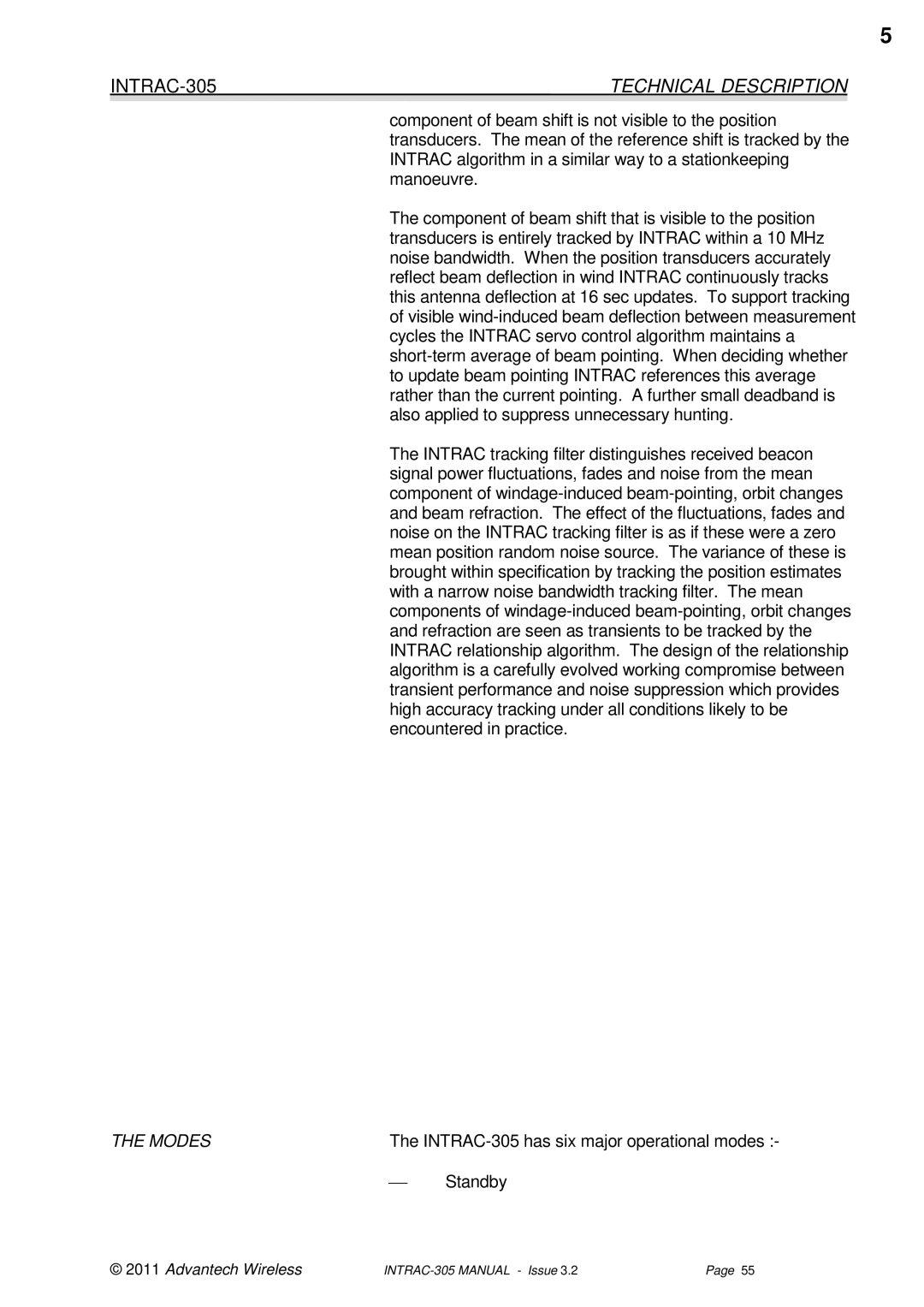5
INTRAC-305 | TECHNICAL DESCRIPTION |
component of beam shift is not visible to the position transducers. The mean of the reference shift is tracked by the INTRAC algorithm in a similar way to a stationkeeping manoeuvre.
The component of beam shift that is visible to the position transducers is entirely tracked by INTRAC within a 10 MHz noise bandwidth. When the position transducers accurately reflect beam deflection in wind INTRAC continuously tracks this antenna deflection at 16 sec updates. To support tracking of visible wind-induced beam deflection between measurement cycles the INTRAC servo control algorithm maintains a short-term average of beam pointing. When deciding whether to update beam pointing INTRAC references this average rather than the current pointing. A further small deadband is also applied to suppress unnecessary hunting.
The INTRAC tracking filter distinguishes received beacon signal power fluctuations, fades and noise from the mean component of windage-induced beam-pointing, orbit changes and beam refraction. The effect of the fluctuations, fades and noise on the INTRAC tracking filter is as if these were a zero mean position random noise source. The variance of these is brought within specification by tracking the position estimates with a narrow noise bandwidth tracking filter. The mean components of windage-induced beam-pointing, orbit changes and refraction are seen as transients to be tracked by the INTRAC relationship algorithm. The design of the relationship algorithm is a carefully evolved working compromise between transient performance and noise suppression which provides high accuracy tracking under all conditions likely to be encountered in practice.
THE MODES | The INTRAC-305 has six major operational modes :- |
| ⎯ | Standby |
© 2011 Advantech Wireless | INTRAC-305 MANUAL - Issue 3.2 | Page 55 |

